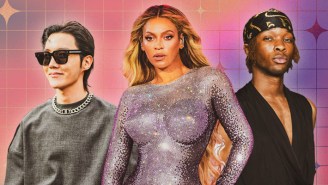The Greatest Showman opens with an intricate, dazzling musical number featuring trapeze artists, fire breathers, dancers, lions, elephants, horses marching with feather plumes on their heads, and Hugh Jackman, resplendent in a red jacket and top hat, twirling his cane and belting the title tune. When the song ends, it turns out that it was all a daydream by a young Phineas Taylor Barnum as he stares through a shop window at a mannequin dressed in epaulettes and tails. The opening number, as all good opening numbers do, clues us in to how the rest of this movie-musical is going to go: It makes about as much sense as a dream, yet you leave with a vague feeling that you just saw something wonderful.
There’s an easy comparison to make between The Greatest Showman and P.T. Barnum’s Greatest Show on Earth. Barnum’s real-life circus — which was more like a freak show — promised wonders that turned out to be hoaxes for a populace hungry for entertainment that was new, different, and exciting. He’s the man who famously never said, “There’s a sucker born every minute.” His business was show business, and if that meant toeing the line between ringmaster and swindler, so be it.
But that’s not quite what’s happening here.
The Greatest Showman is a wildly idealized take on Barnum’s humble beginnings that touts itself as an uplifting story about the importance of family, believing in yourself, celebrating your differences, friendship, love, and racial inclusivity. There’s a lot going on. And barely any of it is historically accurate. Barnum did run a circus, he did purchase Scudder’s American Museum in 1841, and he did accompany the opera singer Jenny Lind on her tour of the states. But Zac Efron’s character, Phillip Carlyle, is made up (the Bailey of Barnum & Bailey never shows), and Jackman looks nothing like the actual P.T. Barnum. Many of the historical details, such as the first person Barnum ever put on exhibition — a nearly blind and paralyzed slave woman named Joice Heth he claimed was over 100 years old and owned by George Washington himself — are completely removed from the story. It’s a safe, family-friendly picture book version of events that were much less savory than this movie-musical ever tries to reckon with.
That said, it’s also beautiful. The movie is handsomely shot by first-time feature director Michael Gracey, an Aussie commercial director and visual effects artist. There are moments where the camera dips and swirls, like during Efron and Zendaya’s romantic duet they sing while swinging through the air barely attached to trapeze ropes hanging from the ceiling. It’s the most hilariously dangerous love song I’ve ever witnessed in a musical, but it’s also kind of exhilarating.
The costumes are also worth a look, if a little too clean to believe they were ever walked through the slums of mid-19th century New York City. Sequins and velvet turn Barnum’s comrades into a coterie of oddities and freaks who, with their coiffed candy-colored hair and cat-eye contacts, look like vaudevillian version of the X-Men. The opera singer Jenny Lind (Rebecca Ferguson) wears a gorgeous white gown for her big number, and Barnum’s wife Charity (Michelle Williams) has a particularly covetable flowy powder blue housecoat. Even Ferguson’s wig, while definitely a wig, looks great. As does Williams’. And Zendaya’s. Is… anyone’s hair in this movie real?
This is a movie-musical, and an original movie-musical at that, so I should probably address the music. Listen, it’s no Les Mis. Broadway tunesmiths Benj Pasek and Justin Paul (also responsible for last year’s Oscar darling La La Land) have written ensemble numbers, solos, and duets with a modern spin that ends up distracting from the rest of the movie. I never met the man, but I doubt “You can do like you do” is something that P.T. Barnum would have said. Despite this, I’ve been listening to the soundtrack every day since it was released online earlier this month. A lot of it is mindless and overly simplistic, yet I catch myself tapping my foot to it anyway. Jackman and Efron are charming during “The Other Side,” a soft-shoeing, tapdancing duet in a bar reminiscent of the “No Dames” sequence from the Coen brothers’ Hail, Caesar! One of the movie’s more earworm-y ballads, “Never Enough,” — sung gorgeously by Loren Allred, who provides the voice of Jenny Lind — is only a verse and a chorus, repeated three times. Keala Settle, who plays bearded lady Lettie Lutz, lends her incredible range to “This Is Me,” the peppy climactic number that expresses the movie’s central sentiment of self-acceptance.
This conceit — that of a circus of freaks learning to love themselves and each other because of their flaws, instead of in spite of them — has been done before, and better, in certain episodes of American Horror Story: Freak Show and Katherine Dunn’s empathetic novel Geek Love. The Greatest Showman is a sanitized version of these efforts, refusing to delve deep enough into what it means to look different, or the sweet but hollow interracial romance between Efron and Zendaya’s characters that could have had more nuance to it if it was part of a different story. Lettie has a few small character moments so touching, I grew frustrated that I wasn’t watching a movie about her instead.
The Greatest Showman is earnest, joyful, not bad enough to be bad, but not good enough to be the next Rent. It’s the version of events that the real P.T. Barnum would want us to see: At the end, there’s a scene where Hugh Jackman rides up to the door of his family’s home on the back of a giant CGI elephant. Like Barnum’s menagerie, it’s escapism at its finest, tossing away the shackles of realism to dazzle us with this strange spectacle, leaving us to wonder afterwards if it was really worth it.






